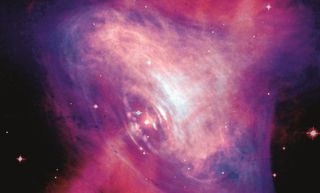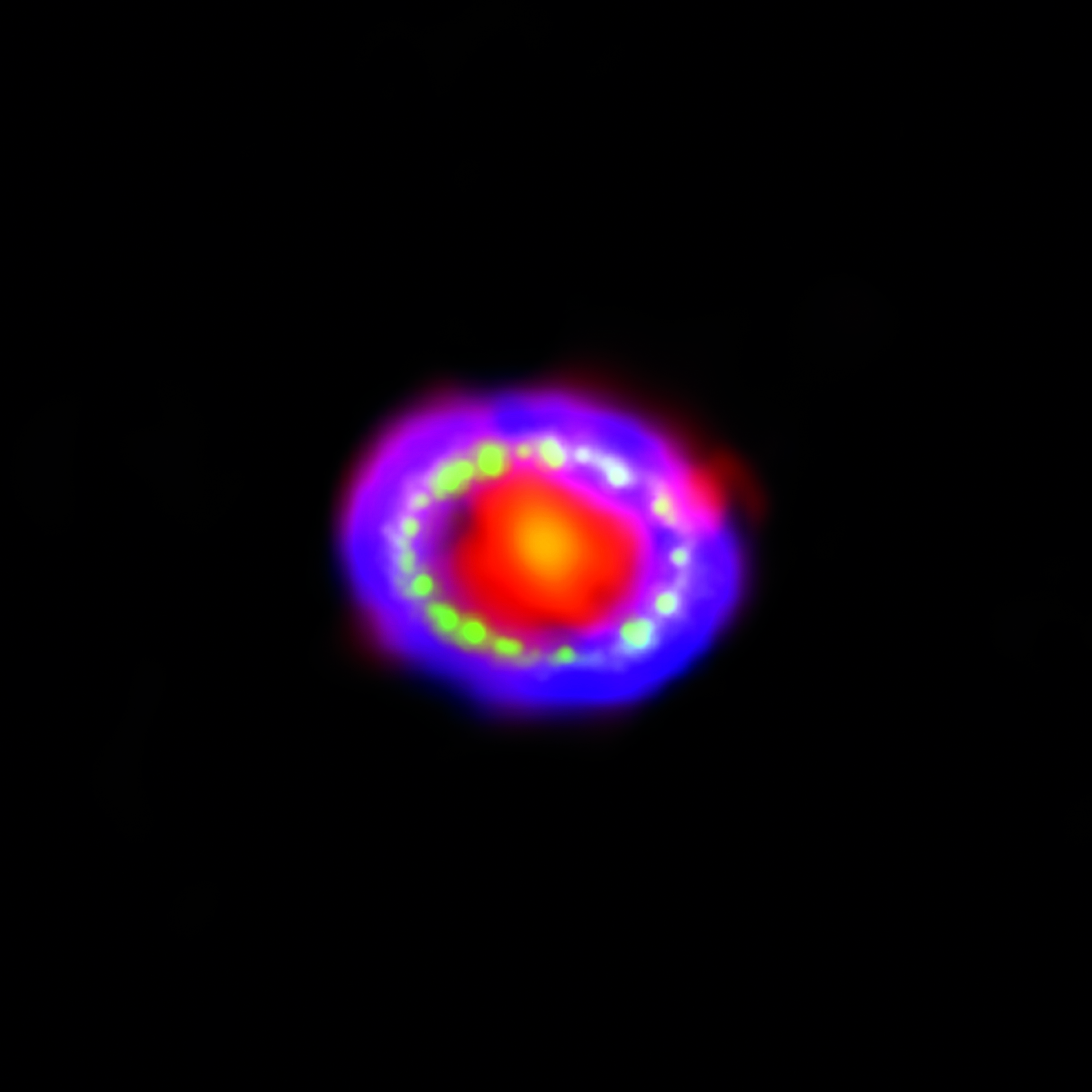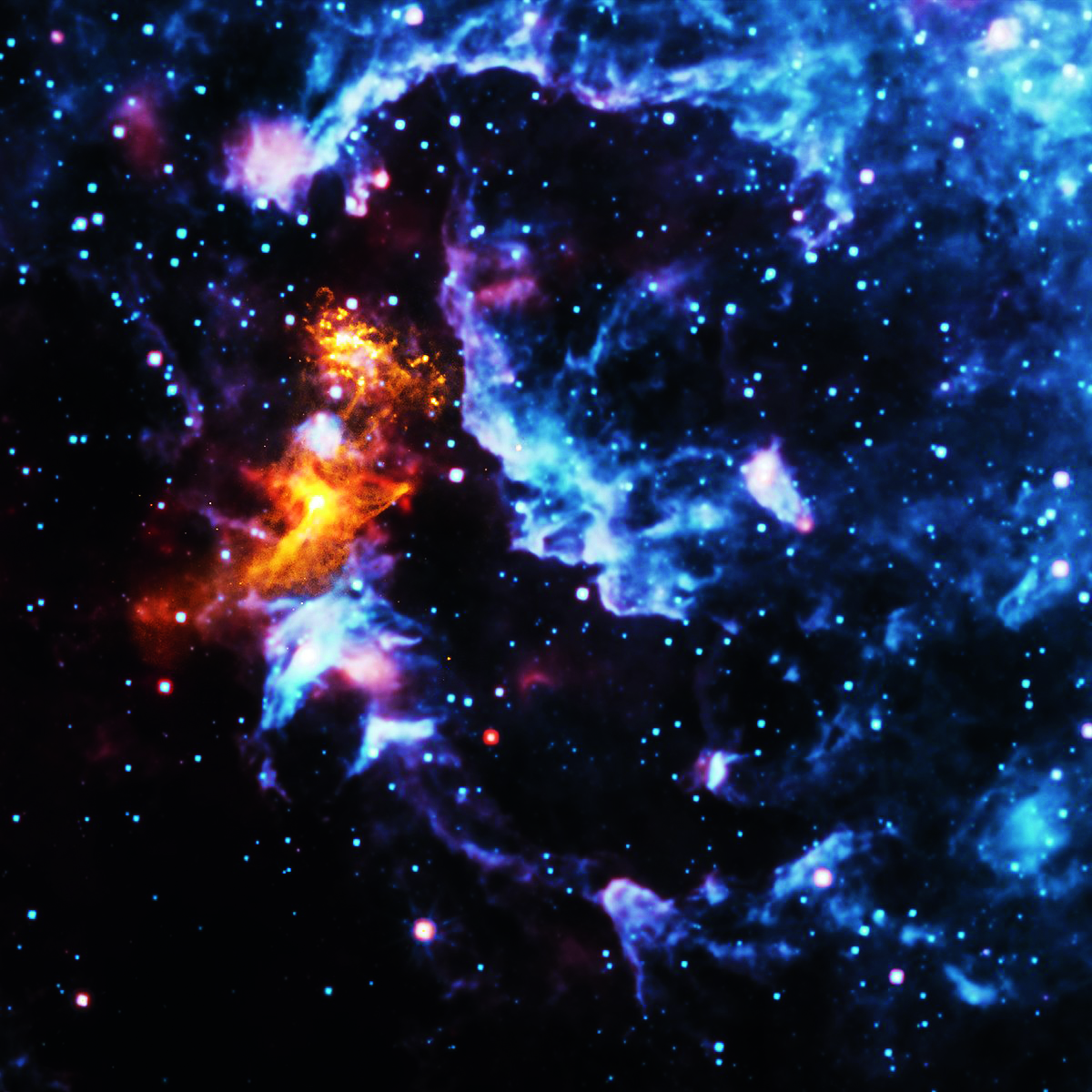Volunteer computing is narrowing down the search for neutron stars | PC Gamer - hibblerackind
Volunteer computing is constrictive down the look for for neutron stars

Technical school News report

This article first appeared in PC Gamer magazine issue 360 in August 2021, A part of our 'Tech Report' serial publication. Every month we search and excuse the latest technological advances in computing—from the howling to the truly supernatural—with help from the scientists, researchers, and engineers making information technology all happen.
Folding@Home, the distributed computing projection that's taking on COVID, cancer, and all kinds of past diseases through the power of unused realistic cards and idle CPU cores, has been in the headlines a deal out recently, not sole for creating the cosmos's first exascale supercomputer, merely for its recent paper in Nature in which it set out potential targets for new drugs within the spike protein of SARS-Cov-2, which the virus uses to tunnel into our cells and stimulate COVID-19.
Simply what if your thinking transcends Earthly disease and wants to roam wider? What if you want to bring together Tim Curry's Anatoly Cherdenko in spaaaace? Well, with the dying of SETI@Nursing home, you'rhenium No longer able to hunt for signals from alien civilisations, but you can probe the mysteries of gravitational waves and neutron stars with Einstein@Home. (There are many otherwise projects, including a neat one, Leela Chess Zero, that's teaching computers to play Bromus secalinus.)
Einstein@Home takes data from individual sources, including the Arecibo radio telescope we've covered in these pages before its prematurely collapse. It then processes this data looking for for pulsars, the rapidly spinning neutron stars discovered in 1967 by Jocelyn Bell (her male PhD supervisor was awarded the Nobel prize for her work in 1974, because cough up, cough, cough out) using the Arecibo telescope.

The idea for Genius@Home came from a conversation in 1999 between physicist Bruce Ethan Allen, currently director of the Liquid ecstasy Planck Institute for Attractive force Physics in Hannover Germany (while we'rhenium speaking about PhD supervisors, Allen's was Stephen Hawking), and a acquaintance. SETI@Home had been mentioned in the LA Times, but because studying gravity wasn't considered Eastern Samoa 'cool' as searching for aliens, the idea was dropped. The idea resurfaced in 2004, when Allen was cut in touch with Jacques Louis David Anderson from UC Berkeley, the man behind the BOINC package old by many low-density computing efforts. Einstein launched in 2005, and the rest is history. Or, given the wibbly-wobbly nature of clock time at the quantum level, possibly not.
Neutron Star?
Neutron stars are stars that have undergone gravitational collapse to the extent that the electrons, which ordinarily orbit at a small distance from the protons and neutrons in the microscopic nucleus, are forced to combine with the protons, creating nothing just neutrons. A neutron star 20km in diam could weigh equally much as one and a half times the mass of our Sun (diameter: 1.4 zillion klick).
Studying pulsars and gravitational waves therein way requires plenty of computation time, however, and jetting the racks of equipment needed to make over a advanced supercomputer takes, according to Allen's estimate, concluded 2.6 cardinal euros a year just in electricity costs. Far better, then, to farm the exercise out to volunteers, using the spare capacity of computers that were lengthwise anyway.
A pulsar is a spinning neutron star. It Acts of the Apostles something like a lighthouse, producing a beam of radiation from its charismatic poles (some emit light, others tuner waves, X-rays, gamma rays...) that washes across the Earth. This looks to America like a light flashing on and inactive quick and regularly (the Crab Pulsar spins once every 33ms). This speed and regularity offers a way to study gravitational waves, the new hotness in natural philosophy that act like ripples in spacetime, expanding and contracting the distance between objects arsenic they go by and therefore interfering with the regularity of the pulses.

Pulsars don't actually generate gravitational waves themselves though, at least not that we tin can yet detect. Previous gravitational wave discoveries have get from unrivalled-off events, such as the merger of two tremendous black holes that caused spacetime itself to ring like a bell. The discovery of free burning gravitational waves from a spinning object would be great news, Eastern Samoa Allen explains, "The first detection was announced in February 2016, and since that time about 100 other signals have been detected. And they're similar in nature, they're either two black holes mingling together, Oregon two neutron stars merging together, they last a very short time and past they'Ra gone.
"What we're looking now, is what would happen if you had a spinning neutron star with a little tons on IT, a bit bump. As that rotates, that little bump makes it wobble a wee bit. And that unsteady radiates attraction waves. And that would devote us a painting of what's going on inner the star, so this would live a way of studying the properties of a star that we lavatory't see otherwise."
And when Allen says a 'little bump', he's not kidding. "A neutron virtuoso is about ten kilometres in radius. We know, supported on the searches that we've done, that they are flesh out to about one part in ten to the ordinal power, which agency the mountains aren't bigger than a tenth of a millimetre." That's an interesting definition of a lashing, but the data to supporting information technology comes from Albert Einstein@Home—from the PCs of people like those who read this mag. If the bumps on a neutron star were any bigger, the thinking goes, they'd have been noticed by instantly.
Star Turn
That kind of psychoactive fact is voice of the reason it's important to study gravitational waves. Folding@Place has the USP of helping cure disease. SETI@Home was about finding aliens, who wasn't departure to sign prepared to that? Einstein@ Home plate is a trickier trade. "We all walk around with a picture of the world round us," says Allen. "The Earth isn't flat, the Moon isn't ready-made of green cheeseflower, things like that. Your notion of what the universe is is contribution of how you understand the world, and what we're doing here is a very small step towards agreement the world a teensy bit better. It doesn't improve our lives from day to day, but I do think back information technology's actually an important part of human civilisation. When we discover, hopefully, continuous gravitative waves indefinite Clarence Day, it's gonna be a annotate in history, but people bequeath go on to use those to study and learn more than more or less neutron stars, and from there learn nigh other very dense topic. It's petite steps. We call back in our Galax urceolata on that point are well-nig 100 million pulsars, of which we've detected round 3,000 because they happened to be spinning at the right rate."

Albert Einstein@Home has been publishing different papers a year (four in 2020) detailing its discoveries and there is so often more to be discovered. While Folding@Home is tackling an perceptive crisis bolt down on Earth, IT's salutary to sleep with that others have their heads in the sky, making discoveries for no unusual reason than to expand the sphere of human cognition.
Source: https://www.pcgamer.com/volunteer-computing-is-narrowing-down-the-search-for-neutron-stars/
Posted by: hibblerackind.blogspot.com


0 Response to "Volunteer computing is narrowing down the search for neutron stars | PC Gamer - hibblerackind"
Post a Comment